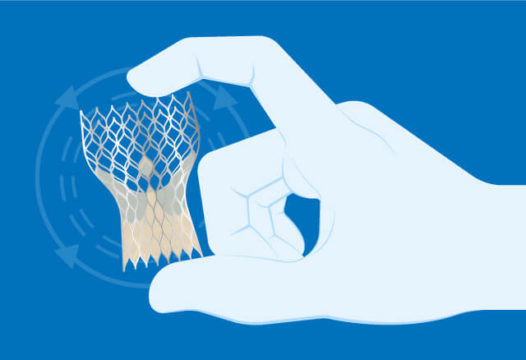Aortic stenosis (AS) is classified according to gradient into high flow and high gradient (D1), low flow-low gradient with reduced ejection fraction (D2), and paradoxical low flow-low gradient with conserved ejection fraction (D3).

D3 AS is characterized by ≥50% ejection fraction, but with systolic volume index ≤35 ml/min.
Post TAVR evolution of D2 and D3 AS, as regards quality of life, has not been thoroughly looked into by the existing studies.
This study looked at 634 patients, 328 presenting D1, 76 with D2 and 230 with D3 AS.
Mean age was 77, 60% were men and STS was 6.6%, with no significant differences in comorbidities, except in those with D2 AS, who presented higher incidence of cardiac failure, functional class IV, atrial fibrillation, definite pacemaker implantation, higher need of cardio-defibrillator prior TAVR and lower ejection fraction.
At 30 days, those with D1 AS showed higher mortality (2.5% vs. 0% vs. 0%, p=0.03 for D1, D2 and D3 AS respectively), with no differences in stroke, major bleeding, or dialysis need. The need for definite pacemaker implantation was higher among D2 AS patients.
After one year followup, there were no significant differences in mortality, stroke, MI, major bleeding, need for pacemaker implantation or readmission. All 3 groups experienced improved functional class and quality of life. D2 AS patients also showed improved ejection fraction.
Conclusion
Patients with D2 AS experienced significant improvement in ejection fraction and quality of life at 30 days and one year. The need for pacemaker implantation after TAVR was higher than in the other subtypes, while stroke and mortality were lower than expected, which supports the use of TAVR in this high risk group.

Dr. Carlos Fava.
Member of the Editorial Board of SOLACI.org.
Original Title: Transcatheter Aortic Valve Replacement Improves Quality of Life and Ventricular Function With Low-Flow/Low-Gradient Aortic Stenosis.
Reference: Kelley N. Benck , et al. JSCAIhttps://doi.org/10.1016/j.jscai.2023.101266.
Subscribe to our weekly newsletter
Get the latest scientific articles on interventional cardiology





